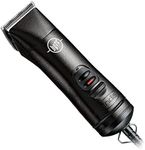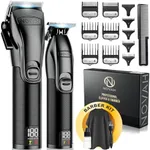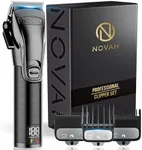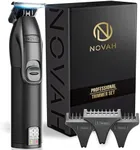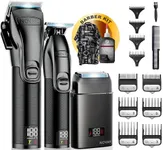Buying Guide for the Best Professional Hair Clippers
Choosing the right professional hair clippers is all about matching the tool to your needs, whether you’re a barber, stylist, or someone who wants salon-quality results at home. The best clippers will feel comfortable in your hand, cut smoothly through different hair types, and be easy to maintain. Before you buy, think about how often you’ll use them, what kind of hair you’ll be cutting, and whether you need them for detailed work or bulk cutting. Understanding the key features will help you make a confident choice.Motor TypeThe motor is the heart of the clipper and determines how powerful and efficient it is. There are generally three types: magnetic, rotary, and pivot motors. Magnetic motors are fast and lightweight, making them good for light to medium use. Rotary motors are more powerful and can handle thick or wet hair, making them ideal for heavy-duty or professional use. Pivot motors are quieter and have more cutting power at lower speeds, which is good for bulk cutting. If you plan to cut a lot of hair or work with different hair types, a rotary or pivot motor is a solid choice. For occasional or lighter use, a magnetic motor may be enough.
Blade MaterialBlades are usually made from stainless steel, carbon steel, or sometimes ceramic. Stainless steel blades are durable and resist rust, making them a reliable all-rounder. Carbon steel blades stay sharper for longer but may need more care to prevent rust. Ceramic blades stay cool and sharp but can be more fragile. If you want low maintenance, stainless steel is a safe bet. For sharper, longer-lasting performance, carbon steel is great if you’re willing to oil and clean them regularly. Ceramic is best if you want cool operation and don’t mind being careful with them.
Adjustable Blade/Blade SizesAdjustable blades let you change the cutting length without switching blades, which is handy for fades and blending. Some clippers come with fixed blades and use snap-on guards to change the length. If you do a lot of different styles or need precision, adjustable blades are very useful. If you mostly do one type of cut, fixed blades with guards might be enough. Think about the styles you want to create and choose a clipper that offers the flexibility you need.
Corded vs. CordlessCorded clippers offer consistent power and are great for long sessions, but you’re limited by the cord. Cordless clippers give you freedom to move and are easier to use in tight spaces, but they need to be recharged and may lose power over time. If you work in a busy shop or need to cut for long periods, corded is reliable. If you value flexibility or travel a lot, cordless is more convenient. Some models offer both options, giving you the best of both worlds.
Weight and ErgonomicsThe weight and shape of the clipper affect how comfortable it is to use, especially for long periods. Lighter clippers are easier to handle and reduce fatigue, while heavier ones may feel more solid and stable. Ergonomic designs fit better in your hand and help prevent strain. If you’ll be using the clippers for hours at a time, look for a lightweight, well-balanced model. If you prefer a sturdy feel, a heavier clipper might suit you better.
Maintenance RequirementsSome clippers need regular oiling and cleaning to keep them running smoothly, while others have self-sharpening blades or are easier to take apart for cleaning. If you want a low-maintenance option, look for features like self-sharpening blades or easy-clean designs. If you don’t mind a bit of upkeep, traditional clippers can last a long time with proper care. Think about how much time you’re willing to spend on maintenance when making your choice.








